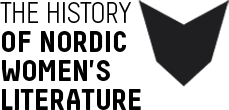When Sweden introduced universal suffrage in the 1920s, a number of established authors used the autobiographical genre to tell their story and forge their artistic identity. Largely due to well-established authors like Selma Lagerlöf, Mathilda Malling, Helena Nyblom, and Marika Stiernstedt, women’s autobiographies acquired greater literary status in the Sweden of the 1920s. The trend peaked in the 1940s and reflected both growing interest and greater feminine self-assuredness. At first glance, such works may appear to be simply margin notes – documentary evidence of their lives behind, alongside of, or prior to their art. Not unexpectedly, however, the autobiographies fully reflect the professions of their authors. They vary greatly, but what all these autobiographers had in common, however, was that they focused more on their writing than their personal lives. Of equal importance is that they furnish their readers with clear instructions for interpreting their works.
Tag: 1960-1970
Gender and Class in Icelandic Women’s Literature of the 1970s
The start of the 1960s saw the publication of the first poetry collection by Vilborg Dagbjartsdóttir who, as a modernist and a multifaceted cultural figure, has inspired both a younger generation of Icelandic female poets and poets of her own generation.Poets such as Þóra Jónsdóttir, who made her debut in 1973, and Þuríður Guðmundsdóttir, who published her first book in 1969, were, like Vilborg Dagbjartsdóttir, born and brought up in the countryside, and later settled in Reykjavík, and they are, to some extent, preoccupied with the same poetic subjects. They express themselves in precisely chiselled, minimalist poems that demand the reader’s full attention.
Icelandic writer Svava Jakobsdóttir’s fantastical narratives are witty, their humour and irony emerging not least from their intertextual dialogues. The Bible acts as something of an internal text within her entire oeuvre, but she also refers to world literature, myths, adventures, and women’s magazines. Her epic texts are at their most gruesome and grotesque when she tackles traditional clichés and stock phrases, which people use without thinking: ‘sacrificing oneself’, ‘giving someone a hand’.Svava Jakobsdóttir’s oeuvre is often divided into two parts, the realistic and the fantastical, and it is the fantastical stories that have attracted the most attention. This division, however, is a simplification of Svava Jakobsdóttir’s radical project. She has, in fact, never rejected the realistic art of storytelling, or its social and political references.
Icelandic writer Ásta Sigurðardóttir had a fondness for self-presentation that took her contemporaries’ breath away. All her short stories reflect a tension between, on the one hand, the longing for normality, security, and bourgeois acceptance and, on the other hand, rebellion, a need for freedom, and a deep-seated rejection of bourgeois values.She loved to perform, but no-one else should write her roles for her. Journeying is a recurrent motif in Ásta Sigurðardóttir’s texts, and her characters are alone, in both a physical and an existential sense. Her late texts lack the intensity that characterised her first short stories. The pride, the self-assertion, the queenly arrogance are gone. The gaze is dull, self-hatred is dominant. There is no longer anything worth describing.
A single woman, Arnfríður Jónatansdóttir, ought to be counted among the modernist group of Icelandic writers known as the Atom Poets. Her poems display the same characteristics: they are written in free form, in a concentrated language, and she makes free use of imagery.Before the emergence of the Atom Poets numerous other poets had straddled the divide between tradition and innovation, and many female poets had merged the old and the new in their poetry. This holds true of authors such as Sigríður Einars frá Munaðarnesi and Halldóra B. Björnsson. But the positioning of them, within Icelandic literary history is not a straightforward matter, and this problem illustrates their poetic conflicts.It is as though they are, themselves, in doubt about their position; they want to prove themselves within a tradition to which they do not, in fact, belong, and they are at the same time filled with enthusiasm for the free-form poetry. They gave themselves whole-heartedly to the new, liberated poetry after having demonstrated, in their debuts, their mastery of the traditional craft – rhyming, alliterative poems in a strict, rhythmical form.
The far too rapid and crude modernisation and urbanisation of Iceland had psychological consequences and caused cultural upheavals. The Icelandic women writers of the period 1930-1965 attempted to analyse the processes they were exposed to, and attempted to trace connections back and forth in time in order to find a meaning in their strange daily lives.Many issues were discussed by women during those years, in a rejection of the post-war ideology of women as carers and housewives. There were also many small out-bursts of frustration and opposition to the arrogance and obvious misogyny of the male literary elite. But the arrogance and contempt nevertheless had an effect, and the younger women’s literature of the 1950s and 1960s is often characterised by caution, distance, and self-censorship. Ambitious debuts were few and far between, and the women’s novels became in general shorter, sparer – every single word was carefully weighed.The short stories of Unnur Eiríksdóttir, Drífa Viðar, and Ásta Sigurðardóttir are all marked by linguistic self-awareness, formal inventions, and absurd or grotesque touches. Modernism was emerging, and it was the young urban women who prepared the way for it.

